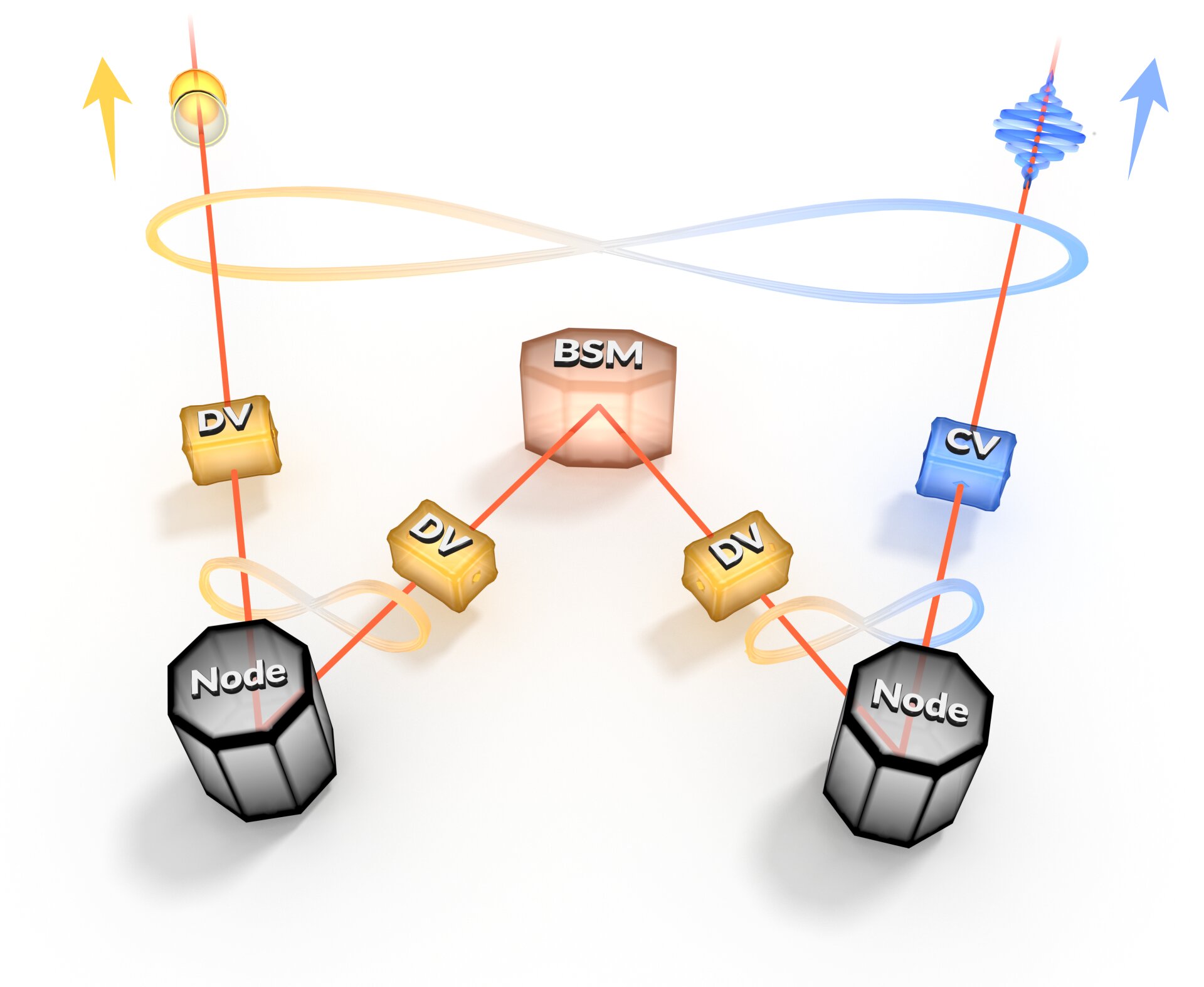
Researchers at the Kastler Brossel Laboratory in Paris have succeeded in implementing a quantum “hybrid” entanglement swapping protocol.
The team has demonstrated a way of connecting different types of quantum nodes that are not necessarily based on the same type of encoding. Enabling such a type of link is a crucial requirement for the interconnection of different physical platforms, allowing the connection of disparate platforms in a future, heterogeneously structured, Quantum Internet.
Similarly to classical networks, with distinct digital or analog encodings, quantum networks can rely on two types of encodings, as exemplified by the particle-wave duality. On the one hand, one can favor the particle nature of the qubits in an encoding similar to the digital one, and referred to as “discrete-variable.” On the other hand, one might prefer using the “continuous-variable,” analog-like, encoding which spurs from the wavy nature of the particles.
In quantum networks, the connection of distant nodes is performed by a specific operation called entanglement swapping. This procedure allows to connect systems that have never interacted before by using a specialized measurement between two other resources separately entangled with the systems involved. This operation, known as Bell-state measurement, effectively transfers the entanglement to the final systems. However, because of the fragility of the entanglement, implementing a protocol so central to the establishment of quantum connections is challenging. To achieve the transfer of entanglement and the connection between different types of nodes, two highly entangled states need to be produced—in particular one “hybrid-entangled” state between particle-like and wave-like qubits. The researchers have successfully propagated, from these two sources, entanglement between different states of light that never directly interacted.
The two optical entangled states involved in the experiment are engineered using optical parametric oscillators, which are efficient non-linear sources. One entangled state is obtained by “splitting” a single photon between two different paths, without knowing which path is followed. The other is a “hybrid-entangled” state between a discrete-variable optical qubit and a continuous-variable optical qubit. Once entanglement is generated through a heralding process, it is then swapped via a unique hybrid Bell-state measurement. The authors have accomplished every step of this demonstration, from creating the initial entangled states to fully characterizing the entanglement after the swapping operation. (Sorbonne University)
The paper has been published in Science Advance.
